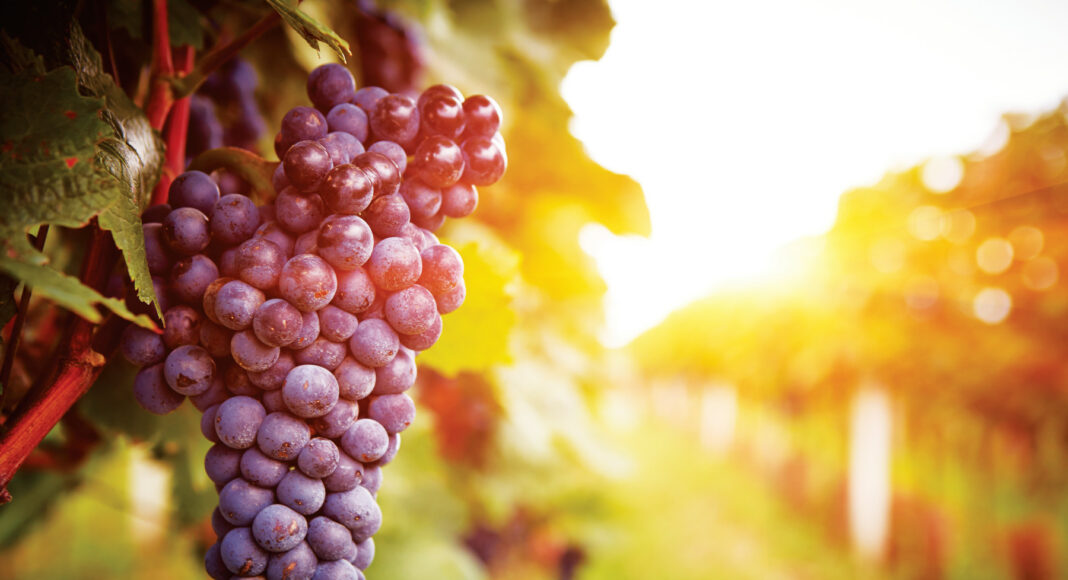The 2020 CZU fire left many viticulturists and winemakers in the Santa Cruz Mountains unsure about whether to harvest and process their grapes. If bathed in smoke, the fruit can absorb compounds that give finished wines a taste that ranges from mildly smoky to ashtray.
But these compounds can be challenging to detect in unfermented grapes. They are tasteless and odorless until saliva breaks them down during tasting.
“That’s when the distasteful properties rear their ugly head,” says UCSC chemist and Pelican Ranch Winery owner Phil Crews.
A few labs around the country test for the compounds, but “they’re not providing the right kind of data,” says Crews.
Most labs in the United States test wine grapes for smoky compounds called phenols that float around freely in the grapes.
“The problem with measuring those free compounds is as soon as they land on the grapes, they’re very quickly incorporated and bound up with those sugars,” says Josh Wurzer, President of SC Labs.
Using techniques from the Australian Wine Research Institute, Wurzer and Crews developed a way to test for the phenols bound to sugars. They argue that this gives a more accurate way to measure the smoke impact on grapes.
“You need about a Ziploc bag full of grapes. The testing runs about $250 a sample, and it takes overnight to get results,” says Crews.
SC Labs—primarily a cannabis testing lab—has received lots of interest since publishing a paper about the methods with Crews in March. They plan to continue offering the testing.
“We’re excited to open up a portion of our business to a whole new clientele,” says Wurzer.
“It should be totally accessible by anyone who wants to know if their products have been tainted.”
Stomping Uncertainty
Some winemakers are sending in grapes that have not been impacted in order to get baseline data for their crops. Some of the compounds associated with smoke occur in grapes naturally, but the levels depend on variety and location.
“I recommend people have their wine grapes and their wine tested even if there’s no impact,” says viticulturist Prudy Foxx. That way, if a fire comes through, they have numbers for comparison.
Foxx works with vineyards in the Santa Cruz Mountains and is impressed by the work of Crews and SC Labs. She emphasizes the need for most testing.
“There are only a few labs that even run these tests, and they became so overwhelmed that there was a huge backup. It was a nightmare,” she says.
“It’s bad enough to lose the value of the fruit. But then to go through the expense, the labor, the equipment of processing the wine can just be a big waste of everyone’s time and money. So you really need the answers.”
She also appreciates the variety of markers that SC Labs tests for. Most testing in the U.S. is based on a compound called guaiacol.
“But guaiacol itself is not necessarily a bad smoke impact,” she explains. “In fact, guaiacol naturally occurs in oak barrels, and it naturally occurs in the varietal syrah.”
A wine at one vineyard she works with tested a 4.2 out of six on the guaiacol scale, “but it ended up getting a 95 from Wine Enthusiast as a finished wine because it just did not express any of those negative smoky characters.”
Another perspective
UC Davis viticulture and enology extension professor Anita Oberholster has researched smoke exposure in wine grapes since 2017. She tests free and bound compounds in wine grapes.
Although Oberholster agrees with Crews that measuring sugar-bound compounds gives a more accurate picture of smoke impact, she also sees testing as a balance between accuracy and efficiency. Testing for free compounds “still has value,” she says.
Many labs currently don’t measure bound compounds because they don’t have the expensive equipment or training. Crop insurance is also based on free compound testing—usually guaiacol.
Before that can change, “we need to develop a robust baseline” for the sugar-bound compounds in wine grapes, says Oberholster.
“We’re going to need way more grapes to analyze from more regions,” she says. “And we know there’s a huge seasonal impact. So we are really going to need—for all our main varieties—at least three seasons.”
A Matter of Degrees
As the climate changes, winemakers must spend more time thinking about challenges like smoke impacts.
“The fires the last couple of years have been way earlier,” says Crews. “And that seems to be the trajectory with global warming.”
But the wine industry is resilient and creative.
“If not fire, it’s water. If not water, it’s temperatures or diseases,” says Oberholster. She remains optimistic about the ability of winemakers to adapt.
Oberholster, Foxx and Crews are also all quick to point out that smoke does not always spell ruin for a crop.
“The things that cause smoke impact break down pretty quickly in the air, so it’s really only very, very fresh smoke that has a high risk,” says Oberholster. “And there’s no carryover. Just because there was smoke one year in a region, there is no quality impact for the next year.”
Not every fire season will be as bad as 2020, says Oberholster. “But the probability is good that every year there might be a region impacted in California, and what we need is more labs like SC Labs so that people can get fast, reliable testing.”













